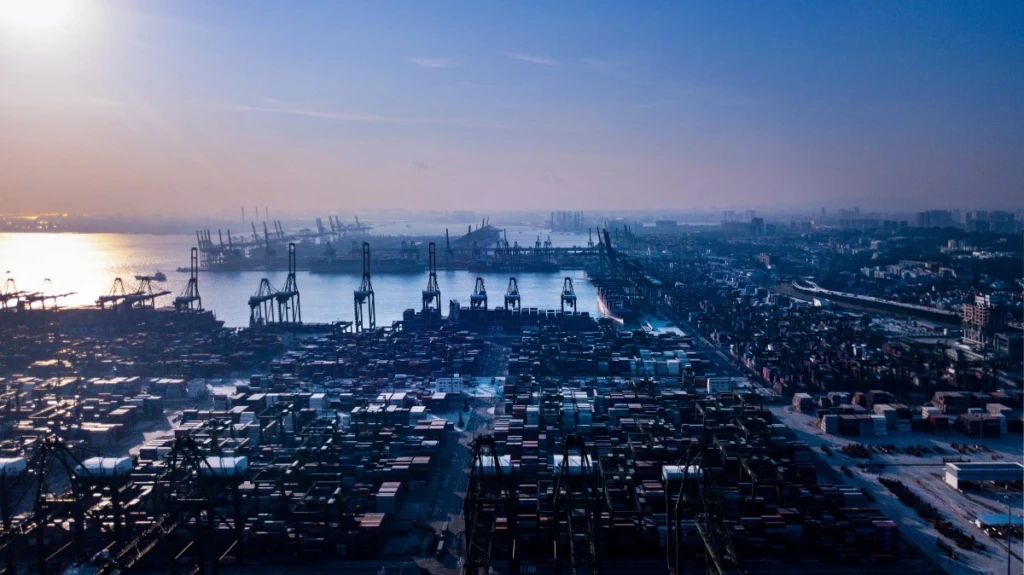
Enhance visibility with Dynamics 365 digital supply chain solutions
Dynamics 365 Supply Chain Insights is now part of Microsoft Supply Chain Center, which is available in preview starting November 16, 2022. Click Introducing the Microsoft Supply Chain Platform, a new approach to designing supply chains for agility, automation and sustainability to learn more.
The concept of the global control tower first appeared on the radar of supply chain leaders around 15 years ago. As more and more companies pursued end-to-end visibility for increasingly globalized supply chains, the idea quickly gained momentum. IndustryWeek noted global control towers as one of the hottest supply chain buzzwords of 2008.1 Still, for an idea that has been buzzing for over a decade, many companies have been challenged to move from concept to reality.
Microsoft Dynamics 365 Supply Chain Management is helping companies overcome these challenges by equipping them with the tools necessary to create digital supply chains that are highly collaborative, coordinated, agile, and demand-driven. With these new supply chain solutions in place, businesses can achieve real-time, end-to-end visibility across the supply chain, breathing new life into concepts like supply chain control towers in the process.
Supply chain control towers
It has quickly become essential for businesses to invest in technology that can help them sense and predict supply chain constraints and disruptions and spikes and troughs in demand. From using advanced forecasting techniques to real-time collaboration between trading partners and commercial teams, business processes are increasingly geared to generate and proactively shape customer demand. Companies must also integrate the agility to continuously optimize supply and production plans in real-time, as forecast and predictions shift into actual customer order receipts. Supply chains control towers help in these efforts by building both agility and resiliency into the supply chain by delivering end-to-end operational visibility, all the way from planning to delivery and back.
Resiliency in this context is about driving business continuity. This can take the form of digitizing production in factories, automating operations on the shop floor, and providing unparallel transparency, in real-time, to leadership. By utilizing Dynamics 365 Supply Chain Insightspreview to create a digital representation of the physical supply chain, whether called a control tower, digital twin, or supply chain nerve center, businesses can reach new levels of agility and gain the ability to sense and proactively mitigate disruptions before they occur. And to respond faster when the inevitable happens, such as an unpredictable or unforeseen event.
McKinsey & Company estimates that a $10 billion business with a high-performing supply chain can reduce cost by as much as $50 million annually through digital initiatives such as supply chain nerve centers.2 This is because control towers enable supply chain organizations to blur the lines between planning and execution, allowing businesses to uncover and exploit improvement opportunities faster than ever before.
Building blocks
Visibility
Starting with the end in mind, regardless of the mixture of people, processes, data, organization, and technology used to erect a control tower, it must deliver end-to-end visibility across all supply chain nodes to be successful. This visibility should penetrate beyond tier 1 and tier 2 partners.
Agility
While visibility is the starting point, visibility by itself is not sufficient. Supply chain solutions must also deliver improvements to agility so companies can more effectively respond to changing customer demands. In practice, this means going beyond the ability to immediately grasp what is happening (system-wide visibility) and on to making predictions of what is likely to happen next. This way, business leaders can adapt and overcome challenges as they are identified in real-time.
Unified data
The value that a construct such as a supply chain control tower can deliver is proportional to the organizations’ ability to unify data from disparate sources. Enterprise resource planning (ERP) systems, legacy business applications, supplier systems of records, siloed hard drives, PLCs, and even IoT data streams all must be incorporated and unified.
Automation
Businesses also need supply chain solutions that incorporate rules-based orchestration to model and automate responses to fulfillment constraints. By leveraging automation in this manner, organizations can proactively address issues with actionable, data-driven insights, allowing them to adapt faster to disruptions and constraints.
Vision
At Microsoft, we see supply chain control towers as a shared service process that can be brought together from a mix of supply chain solutions. For example, a control tower can be assembled using Dynamics 365 Supply Chain Management, Dynamics 365 Intelligent Order Management, Dynamics 365 Supply Chain Insights preview together with Microsoft Power Platform, and our rapidly growing ecosystem of digital supply chain applications.
A supply chain control tower enabled by Dynamics 365 in this fashion positions organizations to respond faster and more intelligently to disruptions and opportunities. With seamless integration to many market-leading API-enabled applications using our configurable pre-built partner connectors, businesses can convert the action signals from what-if analysis into directives sent to the applications that guide day-to-day operational execution.
Organizational benefits
When organizations use Dynamics 365 to create a supply chain control tower, they can realize the benefits of a single platform. One version of truth brings together internal and external stakeholders to visualize constraints and disruptions at any point in the value stream. Then, affected agents and authorities can work together to analyze the upstream or downstream impacts, collaborate in near real-time to formulate and enact optimal responses—all from one location and one pane of glass.
In this way, a supply chain control tower created with Dynamics 365 enables organizations to adapt quickly to demand shifts by deliberately blurring the lines between planning and execution and effectively creating a continuous digital feedback loop across entities and distinct business processes.
Let’s now look at how a customer, Breville Group, is creating a resilient supply chain of the future with Dynamics 365.
Looking forward
Dynamics 365 Supply Chain Management provides manufacturers, distributors, and retailers with the real-time visibility and intelligence they need to move from reactive to proactive. It unifies data and uses predictive insights—across order fulfillment, planning, procurement, production, inventory, warehousing, and transportation—to maximize operational efficiency, product quality, and profitability. And, with innovative technologies, such as AI and machine learning integrated into the solution, it helps organizations accelerate performance even further.
Learn more about how Microsoft Dynamics 365 Supply Chain Management, Dynamics 365 Intelligent Order Management, and Dynamics 365 Supply Chain Insights preview enable companies to strengthen and expand the Four Pillars of the Digital Supply Chain. To learn more, check out our recent webinar Create Agile and Digital Supply Chains with Dynamics 365, and join a panel of Microsoft Experts in the live Ask the Expert session scheduled for December 7, 2021, at 10AM Pacific Time.
1- IndustryWeek, A Guide to the Hottest Supply Chain Buzzwords of 2008, January 2008



